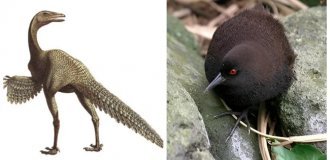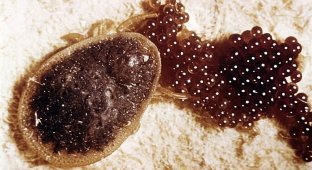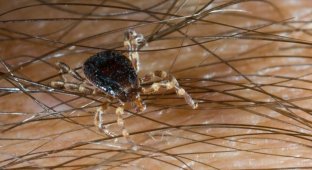4 Strange Features of a Hedgehog: Why They Collect Ticks and Foam at the Mouth (9 photos)
Hedgehogs are strange. And not so much because of their appearance, but because of the changes that their prickly skin makes to their lifestyle. 
1. The hedgehog is the most reliable tick collector for scientists
It's worth starting with the fact that a back covered in needles is a very impractical thing from a hygiene point of view. Hard, long needles interfere not only with predators, but also with their owners. The entire back of the animal is essentially a rough brush that collects dirt, debris and, of course, parasites from the grass. It collects so many of the latter that it is even frightening. In 2017, researchers from the Stavropol Territory calculated that the average long-eared hedgehog carries 23 ticks on itself, and the southern one - 3 times more. And the record holder carried 427 ticks on himself! And this is despite the fact that the weight of hedgehogs does not reach even a kilogram. 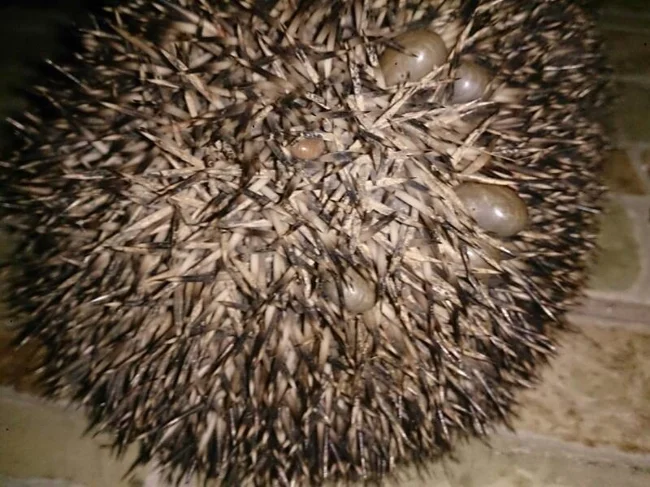
The problem is that, unlike other small forest animals, the hedgehog is not able to remove ticks from itself. The needles get in the way.
The inseparable connection between hedgehogs and ticks has even given rise to a pseudo-scientific myth about the "hedgehog watch". According to it, scientists release hedgehogs cleared of ectoparasites into the forest, catch them after a few hours and divide the number of ticks that have attached by the time of the walk. And these "hedgehog watches" are supposed to be an indicator of the number of ticks in a given region. It sounds incredibly funny, but we have not found a single study that uses this term. However, hedgehogs still play an important role in the study of eight-legged parasites, because they serve as a reliable and stable source of ticks for research. 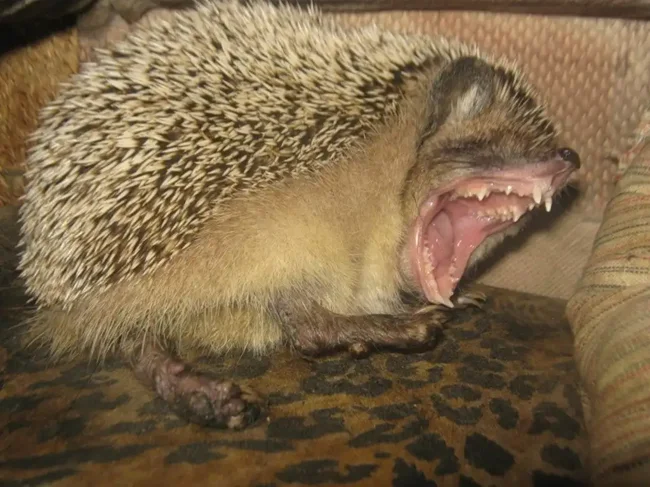
Oh, what's it cost you, hedgehog! Run through the forest one more time, collect some ticks for us!
2. The hedgehog is protected from animals hundreds of times larger than itself
Constant problems with ticks cause a lot of inconvenience to hedgehogs, but the game is worth the candle. After all, the hedgehog is better protected from predators than any other animal of similar size. Yes, bears and wolves can easily flatten a hedgehog into a pancake, but they don't do it. Who would like to eat meat mixed with needles? But for most smaller predators, a hedgehog's picket fence of needles is an almost insurmountable obstacle - if the animal manages to curl up into a ball, of course. 
A small interesting fact: newborn hedgehogs also have needles, but they are soft and delicate.
The transition from normal to defensive mode takes less than a second for a hedgehog. The skin on its back is very mobile and easily stretched, and along the perimeter of the prickly zone there is a special ring muscle. As soon as the hedgehog gets scared, this muscle automatically contracts, pulling the prickly part of the skin onto the soft, vulnerable belly. All he can do is tuck his paws in and press his head to his body. 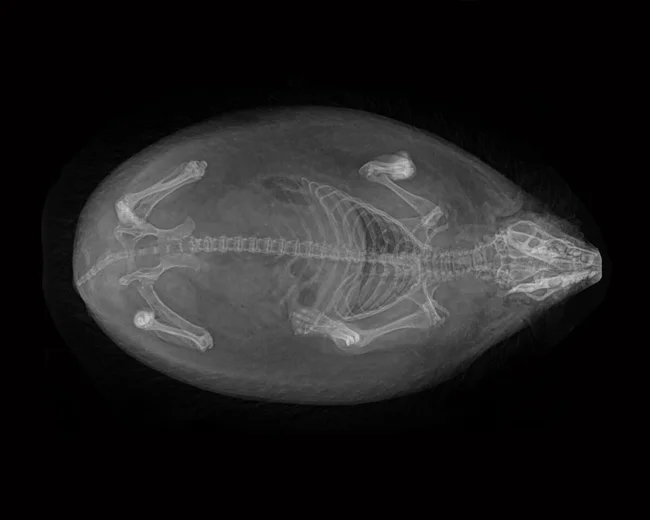
An X-ray of a hedgehog clearly shows that the animal has a decent supply of skin, and he can wrap himself in it as he pleases.
But, unfortunately for hedgehogs, their protection cannot be called absolute. For every hedgehog there is a badger or an owl with powerful long claws that can open the hedgehog. Or a cunning fox, kicking a spherical bundle of needles towards a stream, in which it will be forced to turn around. 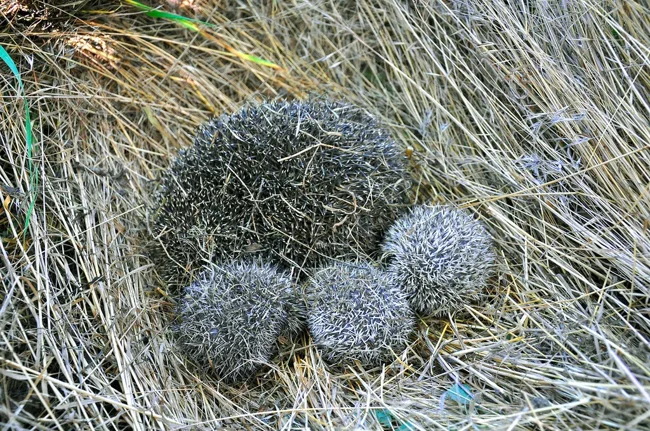
A sheaf of needles and its sheaves.
3. You can't stop a hedgehog even with poison
In addition, needles are useless against snakes, their scaly skin reliably protects them from pricks. Poisonous snakes always find a place to bite a hedgehog and inject a dose of poison into it. But even here, hedgehogs are prepared: a poisoned hedgehog does not die in terrible agony, but simply experiences a few unpleasant minutes, after which it comes to its senses and continues to run about its business. 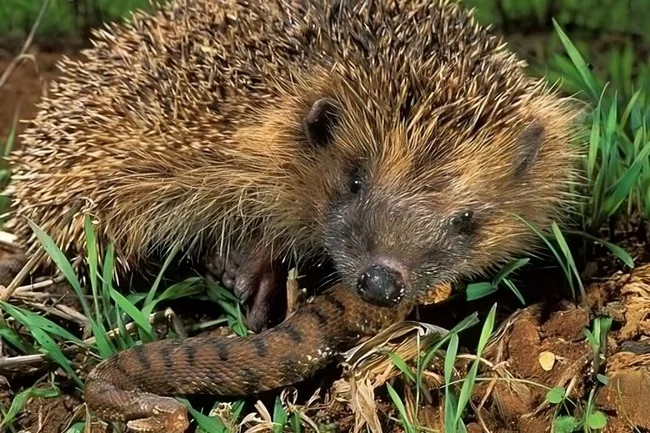
Hedgehogs can even feed on snakes, although they are not a regular part of their diet.
After all, their blood contains erinacine, a special protein that binds hemorrhagic enzymes from snake venom before they cause serious damage to the body. This protein is universal and works against the venom of all vipers, although its effectiveness may vary. 
When you've been bitten by a snake and now you're a little hallucinatory...
4. Hedgehogs love homemade perfume!
To hide from those who are able to overcome the prickly protection, hedgehogs have learned to mask their smell. Moreover, the process of masking can greatly puzzle a person unfamiliar with the habits of hedgehogs. First, the animal shakes and foams like crazy, then smears this foam on a cigarette butt lying nearby (or another source of a strong smell) and rubs it on its back. And then it goes on as if nothing happened! 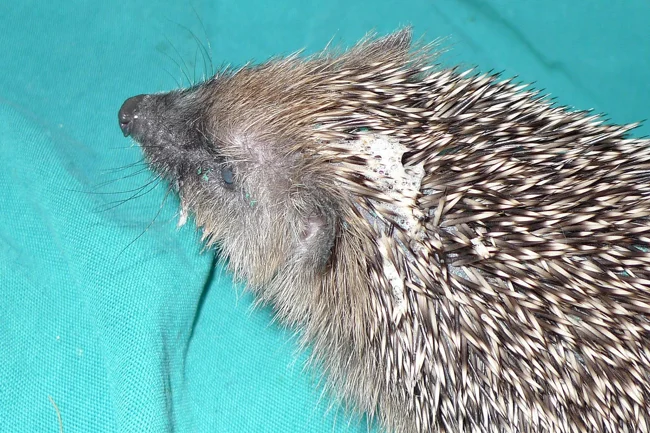
Sprinkles saliva on itself and sits contentedly!
If there are no attention-grabbing objects nearby, the insectivore will still foam from time to time and rub it on its back. The reasons for this behavior are not entirely clear. Perhaps the foamy saliva absorbs odors from the air well enough to mask the animal's natural scents. Or perhaps the animals are fighting parasites and self-cleaning in this way.








